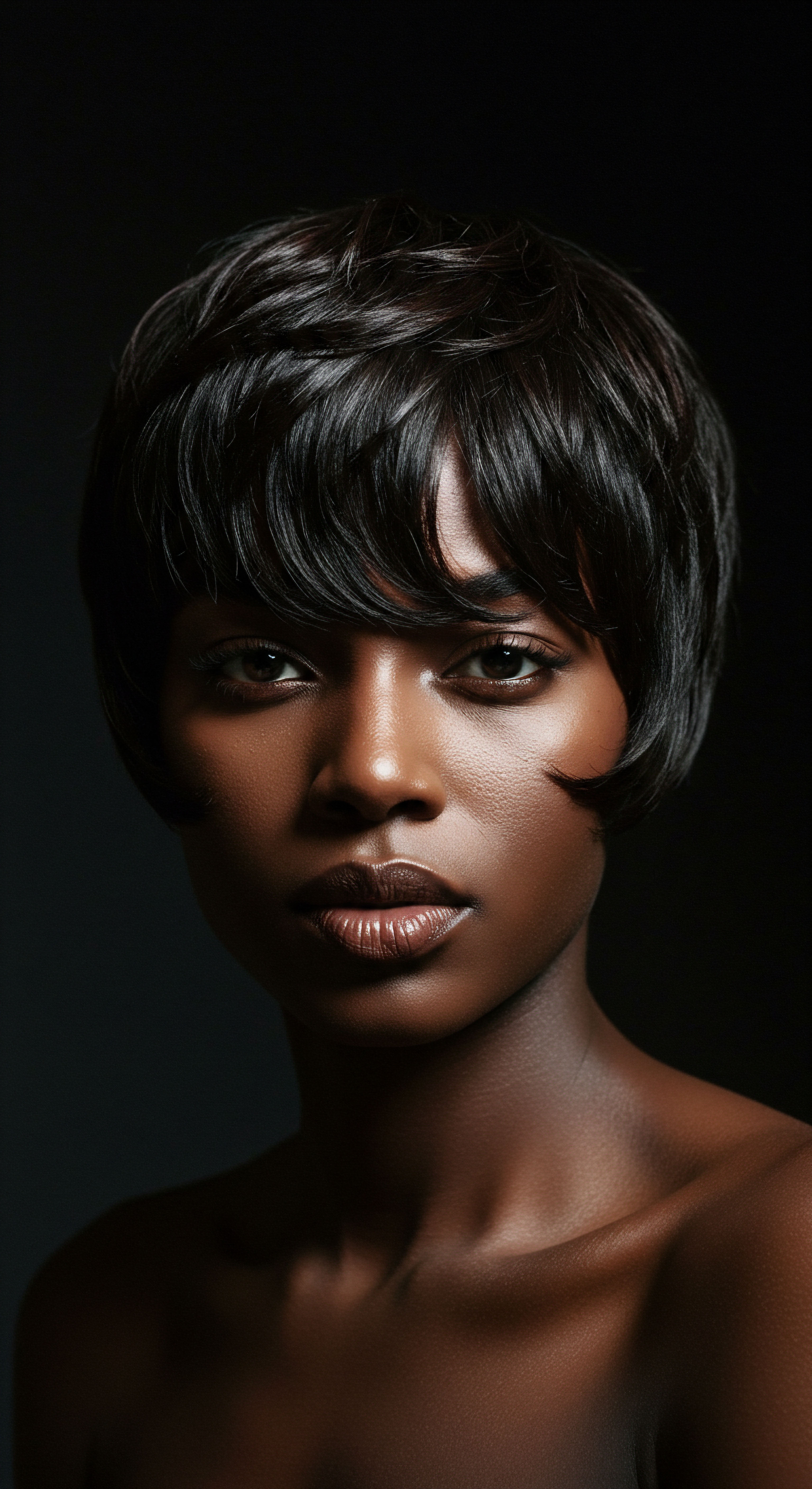
Fundamentals
To truly comprehend Hair Bias Awareness, we begin by listening to the quiet whispers of strands and textures, understanding them not merely as fibers, but as echoes of identity, heritage, and deeply held stories. At its heart, Hair Bias Awareness represents a profound awakening to the systemic and often subtle prejudices individuals encounter because of their hair’s natural form, especially textured hair, Black hair, and mixed hair. This concept moves beyond a simple acknowledgment of unfair treatment; it is an invitation to perceive the intricate ways societal norms, historical currents, and ingrained beauty standards have shaped perceptions of hair, creating spaces where certain textures are celebrated while others are dismissed, devalued, or even penalized.
The initial meaning of Hair Bias Awareness involves recognizing that hair, particularly when it deviates from Eurocentric ideals of straightness or looseness, can become a site of unwarranted scrutiny. It is about understanding that a coily crown, a cascade of locs, or intricately braided styles are not just aesthetic choices; they are often deeply personal expressions, rooted in cultural legacy and individual well-being. This awareness asks us to look beyond the surface, to consider the unseen burdens and the quiet strength carried by those whose hair has historically been deemed “unprofessional” or “unruly.”
Hair Bias Awareness is the recognition that hair, especially textured hair, carries societal meanings that can lead to prejudice and discrimination, affecting identity and opportunity.
This fundamental recognition is the first step in dismantling the invisible barriers that have long stood. It involves acknowledging that the hair growing from one’s scalp, in its most authentic state, should never be a reason for judgment, exclusion, or diminished self-worth. For those with textured hair, this understanding resonates deeply, as it speaks to lived experiences of microaggressions, unspoken judgments, and sometimes, overt discrimination. It is a gentle yet firm reminder that every curl, every coil, every twist holds a rightful place in our collective understanding of beauty and professionalism.
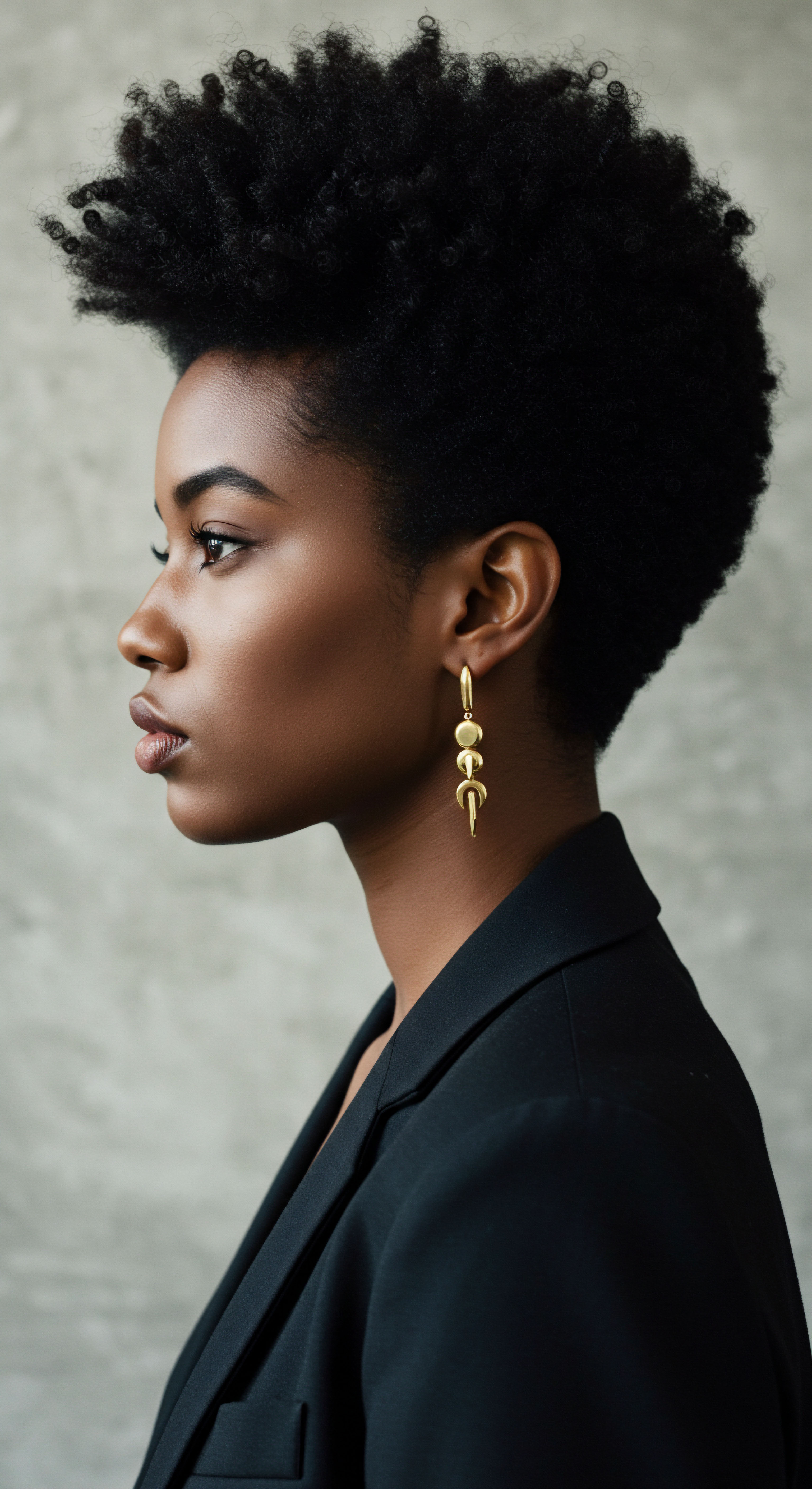
The Origins of Unseen Judgment
The seeds of hair bias were sown centuries ago, often intertwined with colonial histories and the imposition of dominant beauty ideals. In many Western societies, a particular standard of hair, typically straight or loosely waved, became the benchmark of acceptability and refinement. This historical trajectory created a challenging landscape for individuals whose hair naturally possessed different characteristics. The textured hair of Black and mixed-race individuals, with its diverse curl patterns, volumes, and styling possibilities, found itself at odds with these narrow prescriptions.
Consider the historical context ❉ during the 1700s in Louisiana, free Black women, known for their elaborate and artful hairstyles, drew significant attention. This perceived threat to the established social order led to the implementation of the “Tignon Laws” in 1786. These laws mandated that Black women cover their hair with a tignon, a head scarf, a visual marker intended to assert their social position as closer to enslaved women than to white women.
This historical instance serves as a stark early example of how hair became a tool for social control and a symbol of racial hierarchy. It was a deliberate act to diminish visible markers of identity and cultural expression.
Understanding this historical foundation is vital for a true grasp of Hair Bias Awareness. It helps us see that the prejudices observed today are not isolated incidents but rather continuations of deeply rooted societal constructs. The meaning of “professionalism” in many environments, for instance, has historically been defined through a Eurocentric lens, inadvertently marginalizing natural Black hairstyles. This is a subtle, yet powerful, form of control, influencing everything from daily interactions to significant life opportunities.
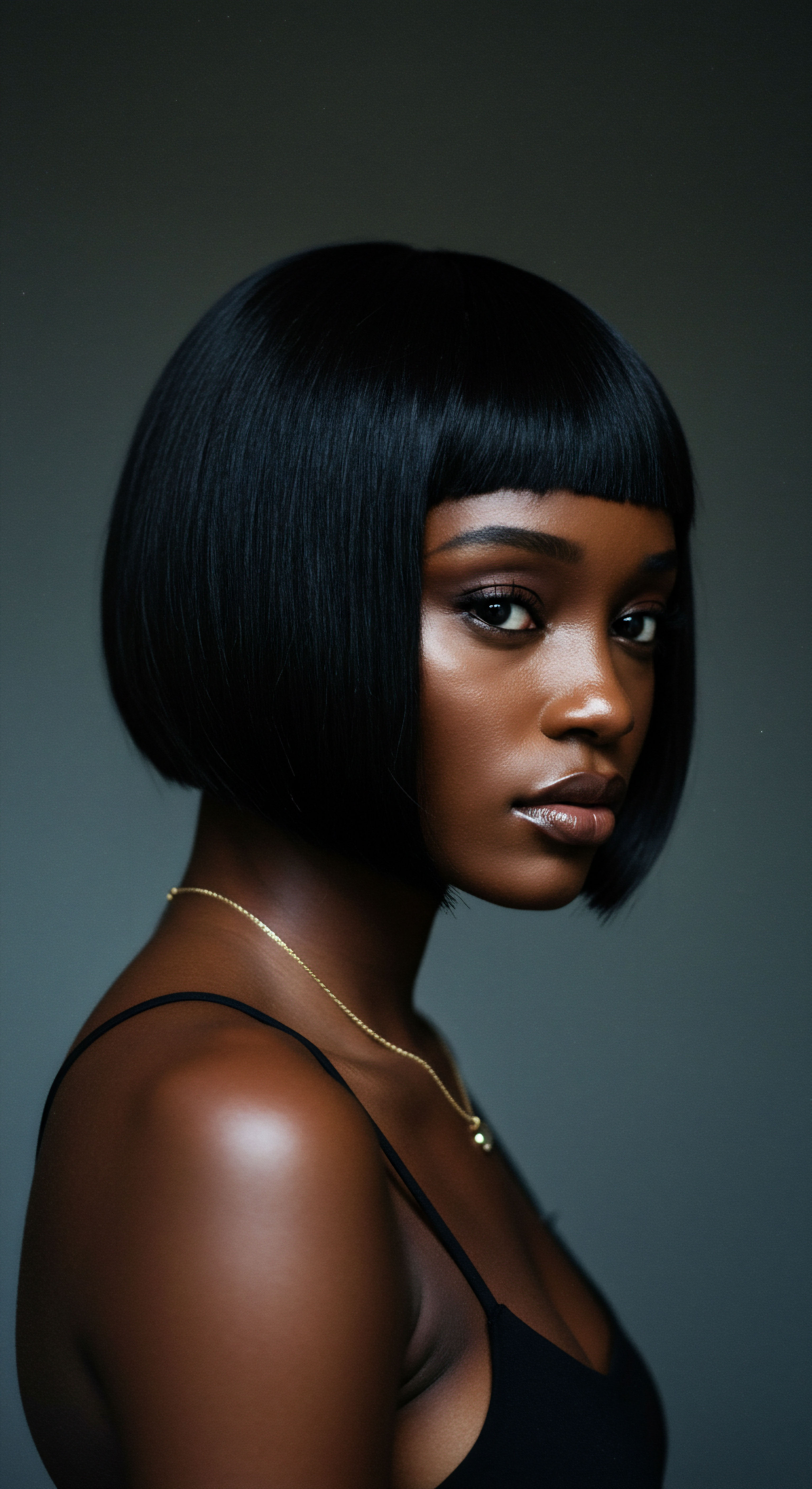
Beyond the Surface ❉ Personal Impact
The significance of Hair Bias Awareness extends into the personal realm, touching upon an individual’s sense of self and well-being. When one’s hair is consistently scrutinized or deemed “other,” it can erode self-confidence and foster a sense of being out of place. Many Black individuals feel a compelling pressure to alter their natural hair to conform to prevailing norms, a practice that can feel like a compromise of their identity. This struggle to align inner self with external expectations, particularly in professional or academic settings, exacts a psychological toll.
The gentle wisdom of Roothea recognizes that hair is deeply connected to self-perception and cultural identity. For many, hair is not just an appendage; it is a declaration of who they are, a link to ancestry, and a canvas for creative expression. When this connection is challenged by bias, it creates a disquieting internal conflict.
Hair Bias Awareness, therefore, is also about cultivating empathy and understanding the emotional landscape that individuals navigate when their natural hair is subjected to prejudice. It is about fostering spaces where every hair texture is seen, celebrated, and respected for its inherent beauty and cultural richness.
This foundational understanding of Hair Bias Awareness is an invitation to see the world with more compassionate eyes, to recognize the unspoken stories held within each strand, and to begin the collective work of building a more inclusive and appreciative environment for all hair textures.
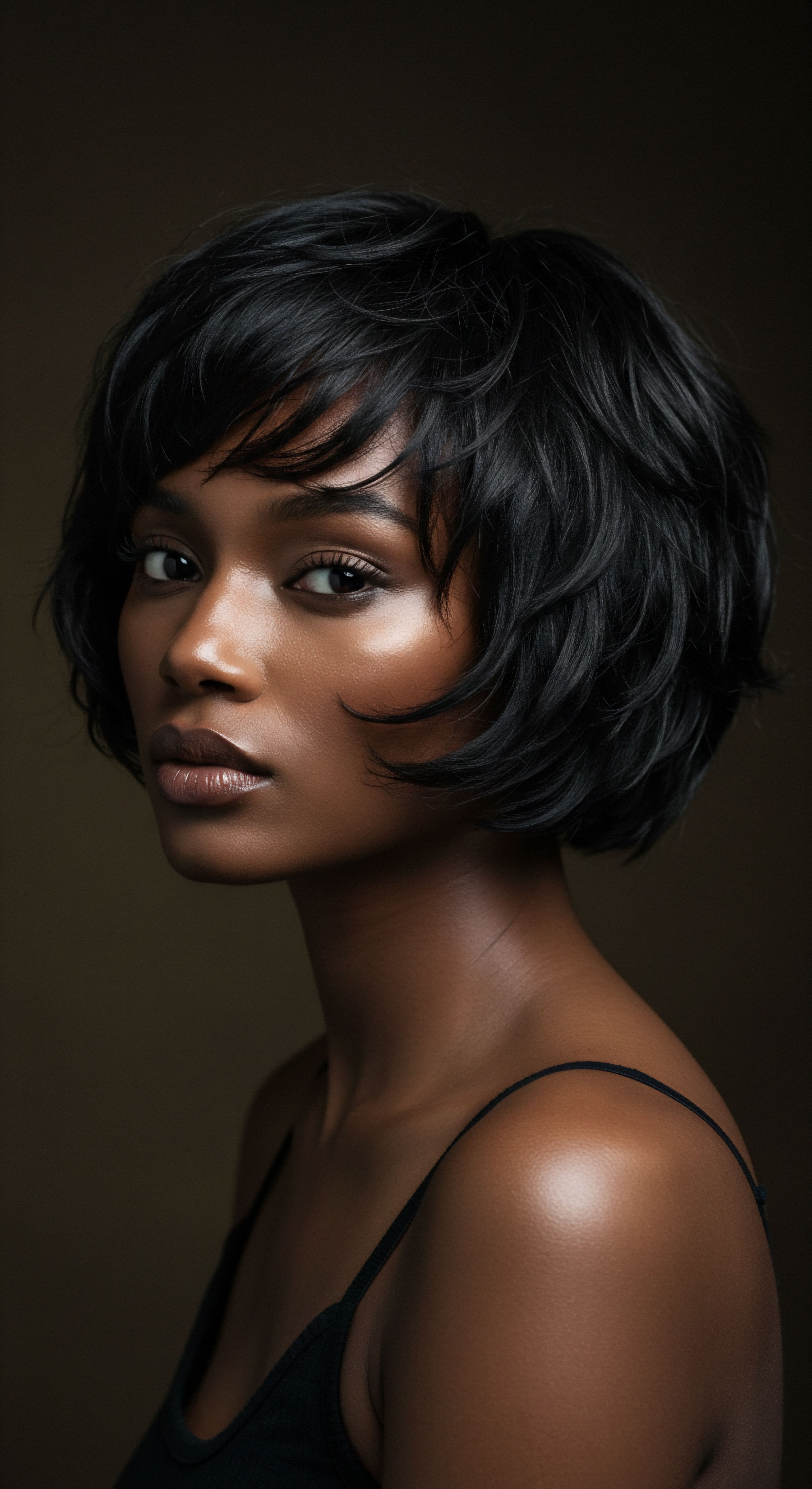
Intermediate
Moving into an intermediate understanding of Hair Bias Awareness invites a deeper exploration of its manifestations, moving from simple recognition to a more nuanced comprehension of its presence in daily life, particularly within the textured hair community. This level of understanding involves dissecting how hair bias operates in practical settings, shaping experiences from the mundane to the momentous. It requires an interpretation of the societal mechanisms that perpetuate these biases and a clarification of their impact on individual agency and well-being.
Hair bias, at this stage, is understood not as an isolated incident, but as a recurring pattern of prejudice that can affect educational pathways, career trajectories, and even casual social interactions. It is a subtle, yet persistent, undercurrent that influences how individuals with textured hair are perceived and treated. This intermediate perspective acknowledges that the biases are often implicit, woven into the fabric of organizational policies, unwritten social rules, and unconscious judgments, making them challenging to pinpoint yet deeply impactful.
A deeper comprehension of Hair Bias Awareness involves discerning its practical applications, from everyday microaggressions to systemic barriers, impacting individuals with textured hair.

Manifestations in Daily Life
Hair bias often manifests through microaggressions, those subtle, everyday verbal, nonverbal, or environmental slights that communicate hostile, derogatory, or negative messages to individuals based on their identity. For those with textured hair, these might range from intrusive questions like, “Can I touch your hair?” to unsolicited comments suggesting their natural styles are “wild” or “unprofessional”. These seemingly small interactions, while perhaps not intended with malice, carry significant weight, signaling to individuals that their natural appearance deviates from an unspoken norm. They create a sense of “otherness” and can chip away at one’s sense of belonging and confidence.
Consider the subtle pressure many Black women experience, feeling the need to straighten their hair for job interviews to enhance their chances of success. A 2023 CROWN Workplace Research Study revealed that 66% of Black women change their hair for a job interview, and among them, 41% specifically altered their hair from curly to straight. This statistic is not merely a number; it represents countless personal decisions, hours spent altering natural hair, and the quiet anxiety of conforming to a perceived standard of professionalism that is often Eurocentric in its very foundation. This is a tangible manifestation of hair bias influencing crucial life moments.
- Unsolicited Touching ❉ Many individuals with textured hair recount experiences of strangers or colleagues reaching out to touch their hair without permission, treating it as a curiosity rather than a personal space.
- Questioning Professionalism ❉ Comments or implications that natural hairstyles, such as locs, braids, or Afros, appear “unprofessional” or “unkempt” are common, leading to unfair judgments in academic and corporate settings.
- Dress Code Conflicts ❉ School and workplace policies, though seemingly neutral, can disproportionately penalize natural hair, forcing individuals to choose between their identity and their participation in mainstream environments.

The Interplay with Hair Care Rituals
Understanding Hair Bias Awareness at this level also involves recognizing its influence on hair care rituals and choices within the textured hair community. For generations, the pursuit of “good hair” — often equating to straight or loosely curled hair — led many to rely on chemical relaxers and heat styling. These methods, while offering conformity to societal norms, can sometimes lead to significant hair damage, including traction alopecia or chemical burns. The decision to alter natural hair, then, becomes a complex negotiation between personal health, identity, and the desire for social acceptance.
Roothea recognizes that hair care is more than just product application; it is a ritual steeped in heritage, self-care, and often, resistance. When hair bias influences these rituals, it can create a cycle where individuals feel compelled to suppress their natural texture, inadvertently sacrificing hair health for perceived social or professional gain. The journey towards embracing natural hair, often called the “natural hair movement,” is a powerful counter-narrative to this historical pressure, a collective act of reclaiming identity and celebrating the inherent beauty of diverse textures.
- Product Choices ❉ Bias can influence the market, leading to a historical scarcity of products designed for textured hair, pushing individuals towards solutions that alter rather than nourish their natural patterns.
- Styling Practices ❉ The prevalence of straightening or altering natural hair for formal occasions or professional settings speaks directly to the societal pressure individuals feel to conform.
- Community Support ❉ The rise of online communities and natural hair movements highlights a collective effort to share knowledge, celebrate diverse textures, and counteract external biases through mutual support and education.
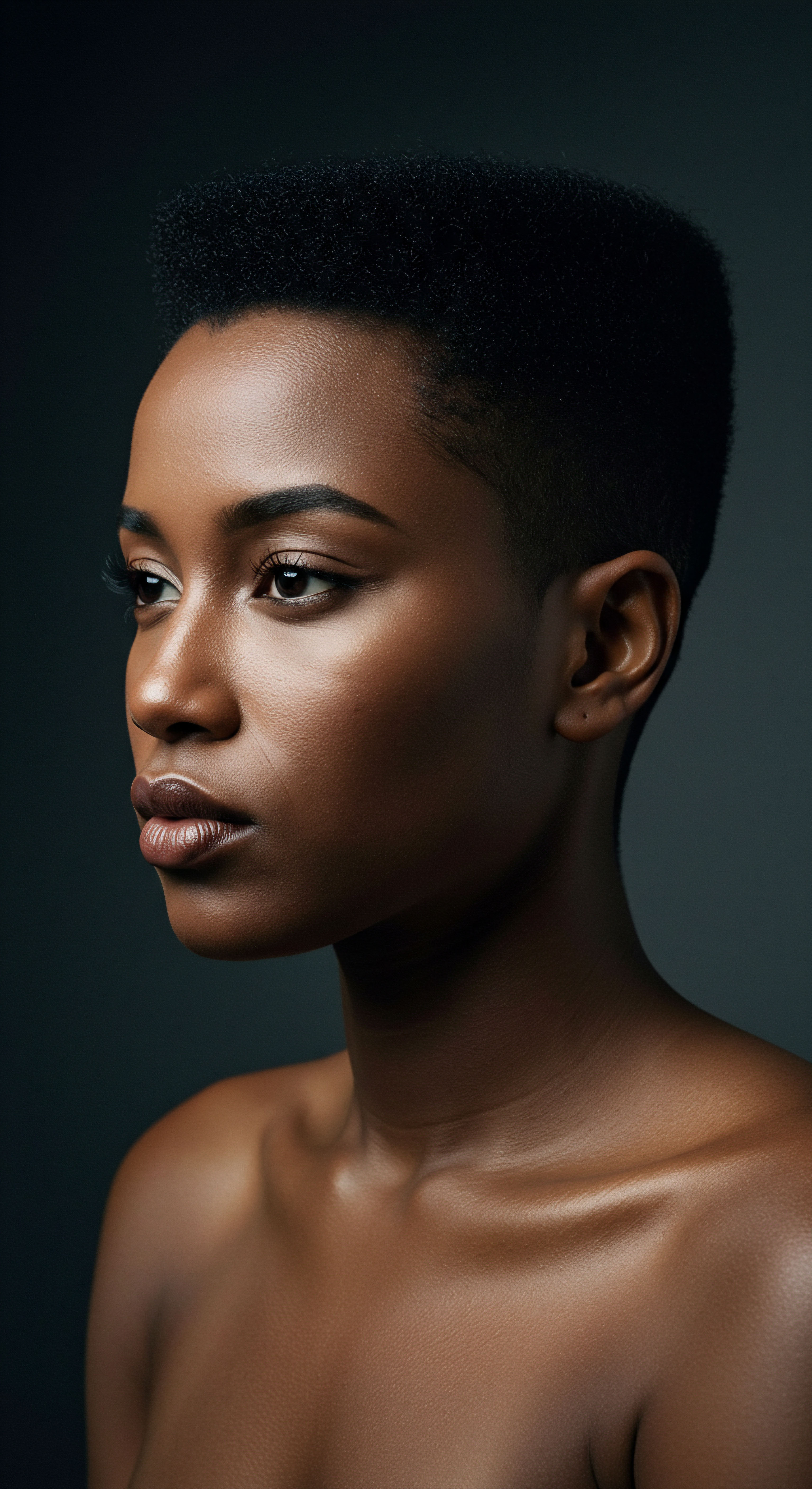
Beyond Individual Incidents ❉ Systemic Dimensions
An intermediate understanding further recognizes that hair bias is not solely about individual prejudice but is deeply rooted in systemic issues. It reflects a broader cultural misunderstanding and often, racism, where Eurocentric beauty standards have been imposed as the default. This imposition has historically marginalized traditional Black hairstyles, labeling them as “unprofessional” or “untidy”.
The CROWN Act (Creating a Respectful and Open World for Natural Hair) serves as a significant response to this systemic issue. This legislation, enacted in various states, aims to prohibit discrimination based on hair texture and protective styles in workplaces and educational settings. Its very existence underscores the widespread nature of hair bias, necessitating legal intervention to protect individuals’ rights to express their cultural identity through their hair without fear of retribution.
Despite its progress, challenges persist, as evidenced by ongoing cases of hair discrimination even in states where the CROWN Act is law. This reveals that legal frameworks, while crucial, are but one step in addressing deeply ingrained societal biases.
| Setting Workplace |
| Typical Manifestations Denial of job offers, disciplinary action, microaggressions, pressure to straighten hair for professionalism |
| Setting Education |
| Typical Manifestations School suspensions, exclusion from activities, biased dress codes, bullying, impact on self-esteem |
| Setting Social Environments |
| Typical Manifestations Unsolicited touching, inappropriate comments, feelings of otherness, objectification |
| Setting Hair bias affects various aspects of life, creating barriers in professional, academic, and social spheres. |
The ongoing conversation surrounding hair bias and the legislative efforts to combat it represent a societal awakening to a long-standing issue. For Roothea, understanding these intermediate dimensions of Hair Bias Awareness means recognizing the complex interplay of personal choice, cultural heritage, and systemic forces that shape the hair journeys of countless individuals. It calls for a deeper commitment to fostering environments where natural hair is not merely tolerated, but truly celebrated as a testament to diversity and individual expression.

Advanced
At its most sophisticated level, Hair Bias Awareness transcends mere recognition or even practical application, delving into a profound explication of its theoretical underpinnings, cultural complexities, and scientific implications. Here, the meaning of Hair Bias Awareness becomes a lens through which we scrutinize the very architecture of societal perception, power dynamics, and the intricate dance between individual identity and collective consciousness. This advanced understanding demands a critical analysis of how hair, particularly textured hair, functions as a socio-political signifier, often subject to historical and contemporary forms of racial and gendered oppression. It requires an expert-driven delineation of the subtle yet pervasive mechanisms through which these biases are encoded within institutional structures, psychological frameworks, and even scientific methodologies.
The true essence of Hair Bias Awareness, from an advanced perspective, lies in recognizing it as a manifestation of systemic anti-Blackness and Eurocentric aesthetic hegemony. It is not simply about isolated acts of discrimination; rather, it is a complex phenomenon rooted in centuries of colonial legacies and the deliberate subjugation of Black identity. This perspective compels us to consider hair as a battleground for self-determination, a site where historical trauma and resilient cultural expression converge. The clarification at this stage is that hair bias is a deeply entrenched societal construct, operating with insidious subtlety and profound consequences across multiple domains.
Hair Bias Awareness, at an advanced level, reveals itself as a deeply embedded socio-political construct, where textured hair becomes a critical nexus for understanding systemic racial and aesthetic hierarchies.

The Theoretical and Cultural Architecture of Bias
From a theoretical standpoint, hair bias against textured hair can be analyzed through the lens of intersectionality, a framework that illuminates how various social and political identities (such as race, gender, and class) combine to create unique modes of discrimination and privilege. For Black women, the experience of hair bias is not solely racial discrimination, nor is it solely gender discrimination; it is an intersectional phenomenon where their Blackness and womanhood, expressed through their hair, generate specific forms of prejudice. This complex interplay means that the discrimination they face is distinct from that experienced by Black men or women of other racial backgrounds.
The concept of “respectability politics” further clarifies this dynamic, where marginalized groups adopt behaviors and appearances aligned with dominant societal norms in an attempt to gain acceptance and mitigate discrimination. For many Black individuals, straightening their hair or adopting styles perceived as “neat” or “conservative” has historically been a survival strategy, a way to navigate spaces that otherwise deem their natural hair “unprofessional”.
Historically, the regulation of Black hair corresponds to analyses of colonial ideological structures, which sought to eradicate native culture and replace it with European systems. The infamous Tignon Laws of 18th-century Louisiana, which compelled free Black women to cover their elaborate hairstyles, were not merely about aesthetics; they were a deliberate attempt to enforce racial hierarchy and diminish visible expressions of Black identity and status. This historical precedent underscores that hair bias is not a modern anomaly but a continuation of deeply ingrained mechanisms of control and dehumanization. The persistence of such biases, even with legislative efforts like the CROWN Act, demonstrates the enduring power of these historical narratives.
Consider the subtle yet pervasive nature of implicit bias, where unconscious attitudes or stereotypes influence perceptions and actions. Research, such as the Perception Institute’s 2016 “Good Hair” study, utilized the Hair Implicit Association Test (Hair IAT) to measure unconscious biases against textured hair. Findings revealed that a majority of participants, regardless of race or gender, held some implicit bias toward Black women’s hair, often associating textured styles with negative attributes like “unprofessional” or “less attractive”. This underscores that even without explicit prejudice, ingrained societal conditioning can lead to discriminatory outcomes, influencing everything from hiring decisions to social interactions.

Scientific and Methodological Biases ❉ A Unique Perspective
A particularly insightful, and perhaps unsettling, dimension of Hair Bias Awareness emerges when examining its presence within scientific methodologies themselves. Consider the field of neuroscience, specifically research involving techniques like electroencephalography (EEG) or hair cortisol collection, which require direct access to the hair and scalp. A critical investigation reveals that these methods have historically and systematically excluded groups of people, particularly Black communities, due to the inherent characteristics of textured hair.
The very design of some EEG caps, for instance, often struggles to accommodate the volume, density, and unique curl patterns of highly textured hair. This technical limitation means that obtaining reliable data from individuals with certain hair types becomes more challenging, potentially leading to their exclusion from studies or requiring extensive, time-consuming preparation that may deter participation. Similarly, collecting hair cortisol samples, which involve cutting hair close to the scalp, can pose cultural or personal discomfort for individuals who hold significant value in their hair or protective styles.
This is not merely an inconvenience; it represents a profound methodological bias. The research paper, “Hair me out ❉ Highlighting systematic exclusion in psychophysiological methods and recommendations to increase inclusion” by Louis, Webster, Gloe, and Moser (2022), articulates this precisely. They highlight that the pervasive racial bias about hair textures and hairstyles can be communicated to participants during data collection, leading to systematic disengagement of diverse populations from neuroscience studies. The authors note that the limitations of these methodologies and staff training are likely related to the lack of diversity among the researchers who developed them, with less than 5% of psychologists and neuroscientists identifying as BIPOC researchers.
Scientific methodologies, particularly in neuroscience, have inadvertently perpetuated hair bias by systematically excluding textured hair, revealing a deeper layer of systemic inequity within research itself.
This phenomenon presents a critical challenge to the purported objectivity of science. If research tools and practices are inherently less accommodating to certain hair types, it results in a significant data gap, meaning that our scientific understanding of human physiology, psychology, and neurological function may be disproportionately based on data from individuals with straighter hair textures. This perpetuates a cycle where the very scientific knowledge base is less representative of the global population, leading to a less complete and potentially biased understanding of human health and behavior. The delineation here is that bias is not only social but can be embedded in the very instruments and protocols of scientific inquiry, creating a silent but significant barrier to equitable knowledge production.
| Aspect of Bias Perception of Unprofessionalism |
| Consequence for Black Women 2.5 times more likely to be deemed unprofessional due to hair |
| Aspect of Bias Job Interview Preparation |
| Consequence for Black Women 66% change hair for interviews; 41% straighten hair |
| Aspect of Bias Workplace Microaggressions |
| Consequence for Black Women 2 times more likely to experience microaggressions with coily/textured hair |
| Aspect of Bias Direct Disciplinary Action |
| Consequence for Black Women Over 20% of Black women aged 25-34 sent home from work due to hair |
| Aspect of Bias These statistics reveal the tangible professional hurdles faced by Black women due to hair bias. |

Implications for Roothea’s Focus ❉ Textured Hair, Black Hair, Mixed Hair, Heritage, and Care
For Roothea, this advanced understanding of Hair Bias Awareness informs every aspect of our mission concerning textured hair, Black hair, mixed hair, heritage, and care. It moves us beyond simply providing product recommendations to advocating for a profound shift in societal perception. The implications are far-reaching ❉
- Cultivating Authentic Self-Expression ❉ A deep comprehension of hair bias compels us to champion the freedom of individuals to wear their hair in its natural state without fear of judgment or professional reprisal. This supports mental well-being and a stronger sense of self-acceptance.
- Dismantling Systemic Barriers ❉ Understanding the historical and systemic roots of hair bias means advocating for policy changes, like the CROWN Act, and promoting organizational cultures that genuinely value and respect diverse hair textures. This includes challenging unwritten rules and implicit biases that shape perceptions of professionalism.
- Promoting Hair Wellness with Integrity ❉ Recognizing the pressures to conform, Roothea prioritizes education on healthy hair care practices that nourish natural textures, rather than encouraging alteration for external validation. This includes discussing the potential long-term consequences of chemical and heat damage often driven by societal pressures.
- Celebrating Cultural Heritage ❉ Hair is a potent symbol of heritage and identity within Black and mixed-race communities. An advanced awareness of hair bias means actively celebrating the rich cultural significance of various hairstyles, from cornrows to locs, recognizing them as expressions of artistry, history, and community.
- Informing Research and Development ❉ The revelation of scientific biases in methodologies underscores the need for more inclusive research practices in hair science and beyond. Roothea advocates for studies that accurately represent diverse hair textures, ensuring that scientific knowledge and product development are equitable and universally applicable. This means questioning who is represented in data sets and whose experiences are prioritized in research design.
The elucidation of Hair Bias Awareness at this advanced level demands a multi-pronged approach ❉ education, advocacy, cultural celebration, and a critical examination of underlying biases in all societal spheres. It is a continuous process of learning, challenging, and affirming the intrinsic beauty and value of every hair texture, particularly those historically marginalized. This commitment ensures that Roothea serves not only as a resource for hair care but as a beacon for true equity and self-acceptance within the textured hair community and beyond. The pursuit of this awareness is an ongoing journey, requiring both intellectual rigor and compassionate engagement to truly reshape perceptions and create a world where all hair is honored.
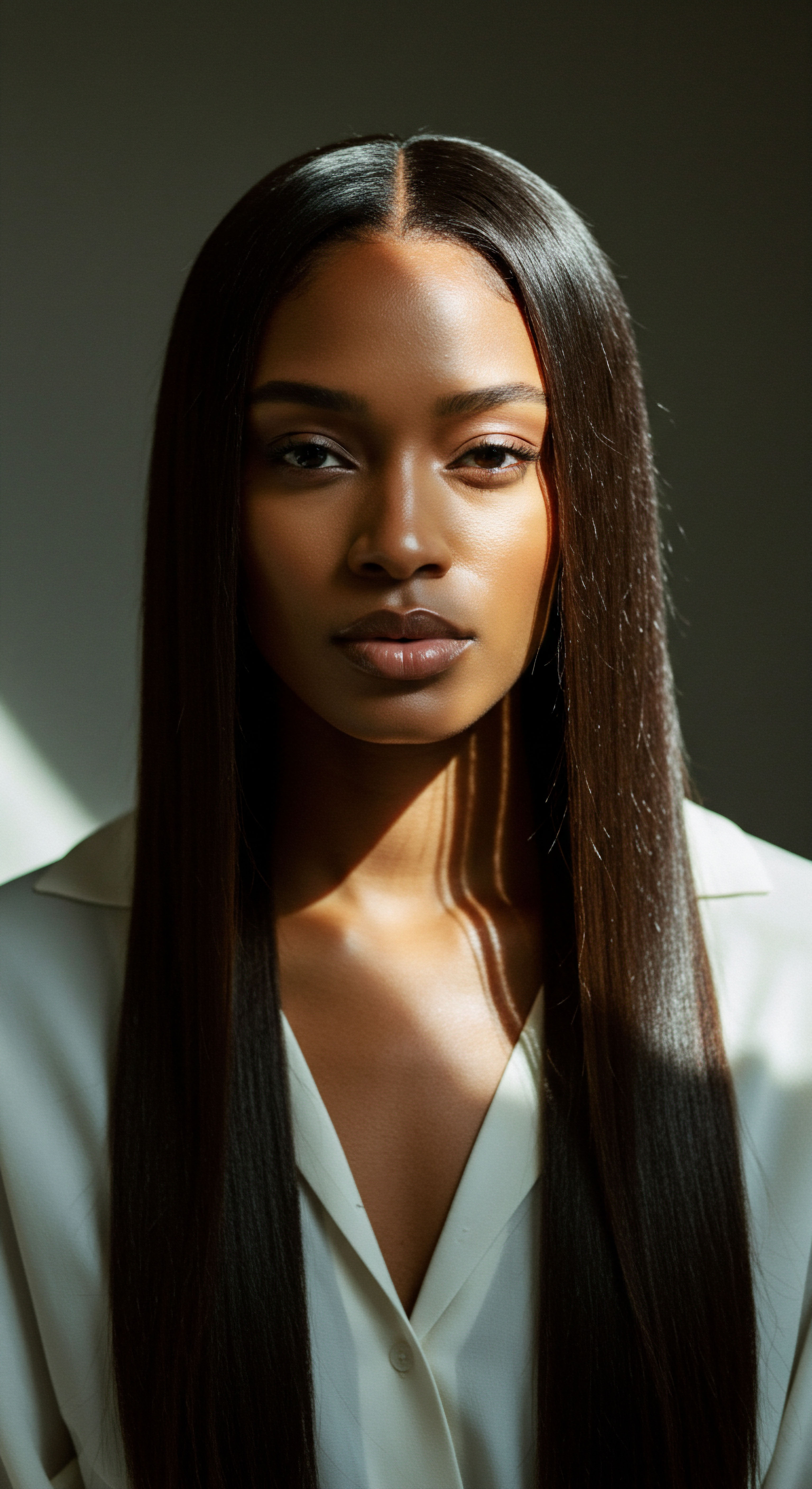
Reflection
As we draw our thoughts together on Hair Bias Awareness, we are left with a gentle understanding that hair, in its myriad forms, is far more than mere keratin strands. It is a silent language, a vibrant expression, and for many, a profound connection to ancestry and self. The journey through understanding hair bias reveals layers of historical impositions, societal expectations, and deeply personal struggles, particularly within the textured hair community.
It illuminates how deeply ingrained certain aesthetic ideals have become, subtly influencing perceptions and opportunities. Yet, within this landscape of challenge, there blooms an undeniable resilience, a collective determination to reclaim and celebrate the authentic beauty of every curl, coil, and loc.
This awareness calls upon us to look inward, examining our own predispositions, and outward, challenging the structures that perpetuate inequity. It is an ongoing invitation to cultivate a world where the natural artistry of hair is universally cherished, where a person’s hair is never a barrier to their potential, and where every individual feels truly seen and valued for the unique splendor they bring. The path ahead involves continuous learning, empathetic dialogue, and unwavering advocacy, ensuring that the rich tapestry of human hair diversity is not only accepted but deeply revered.

References
- Byrd, A. & Tharps, L. (2014). Hair Story ❉ Untangling the Roots of Black Hair in America. St. Martin’s Press.
- Caldwell, P. (1991). A Hair Piece ❉ Perspectives on the Historical and Contemporary Politics of Black Women’s Hair. Howard Law Journal, 34(2), 241-262.
- Craig, M. L. (2006). Passing for Professional ❉ Race, Gender, and the Politics of Identity. Cornell University Press.
- Dawson, S. L. et al. (2019). Identity Suppression and Well-Being in the Workplace. Journal of Applied Psychology, 104(7), 903-918.
- Dickens, D. D. & Chavez, L. (2018). Hair Discrimination in the Workplace ❉ Understanding the Legal Landscape and the Role of the CROWN Act. Harvard Civil Rights-Civil Liberties Law Review, 53(2), 481-512.
- Louis, A. D. Webster, L. Gloe, L. & Moser, J. S. (2022). Hair me out ❉ Highlighting systematic exclusion in psychophysiological methods and recommendations to increase inclusion. Psychophysiology, 59(12), e14177.
- Mbilishaka, A. M. et al. (2020). Brushed Aside ❉ African American Women’s Narratives of Hair Bias in School. Race Ethnicity and Education, 23(1), 1-18.
- Perception Institute. (2016). The “Good Hair” Study ❉ Explicit and Implicit Attitudes Toward Black Women’s Hair.
- Powell, C. (2018). Bias, Employment Discrimination, and Black Women’s Hair ❉ Another Way Forward. University of Miami Law Review, 72(4), 931-970.
- Shih, M. et al. (2013). The Double-Edged Sword of Stereotype Threat ❉ Psychological and Physiological Responses. Personality and Social Psychology Review, 17(1), 19-39.
- Thompson, E. C. (2009). Hair Story ❉ The Politics of Black Women’s Hair. Black Women, Gender & Family, 3(1), 1-25.
- Woolford, S. J. et al. (2016). “My Hair Is a Problem” ❉ Perceived Barriers to Physical Activity Among Adolescent African American Girls. Journal of Adolescent Health, 58(4), 452-458.
- Yerima, A. (2017). The Imperial Aesthetic ❉ Hair and the Politics of Race in Africa. Journal of Black Studies, 48(7), 648-662.